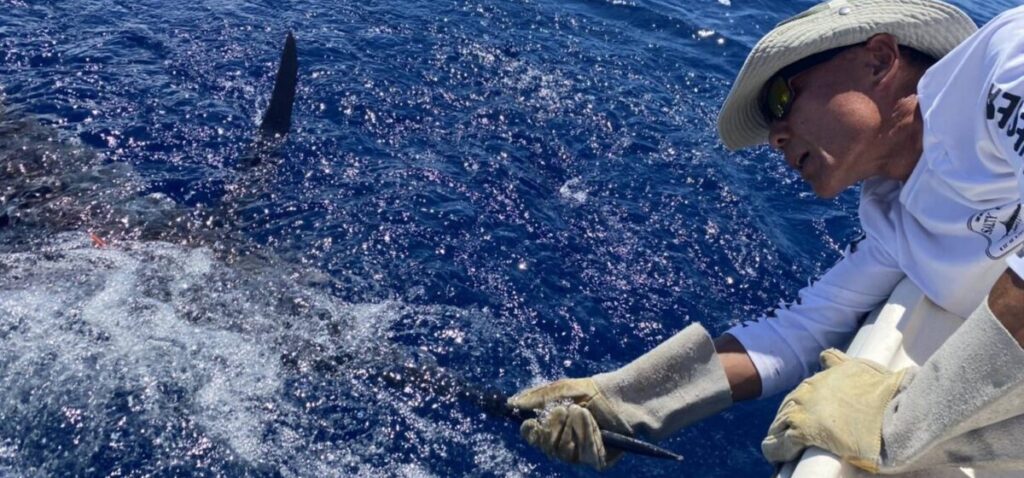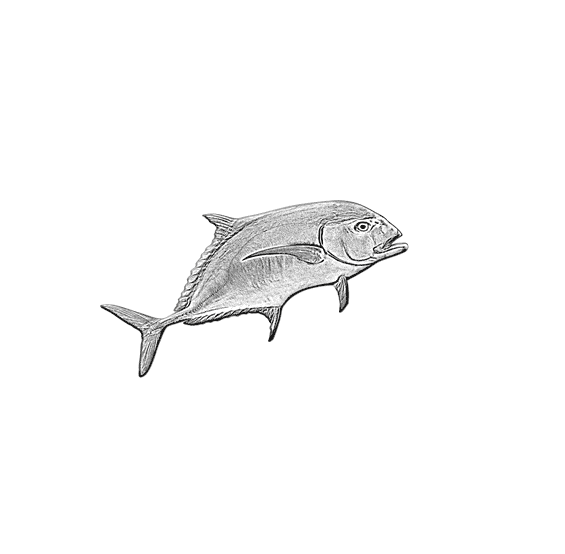
Marlin Fishing Basics
What are the Types of Marlin?
There are 4 main species of marlin: Blue, Striped, Black, and White marlin. Each species has it’s own characteristics, and they’re all fun to catch.
Blue Marlin
Blue marlin are probably the best known marlin species to anglers. They’re big, sometimes weighing up to 1900 pounds! Though that is monster sized, and rare, anglers can expect to reel in a 300 to 500 pound catch once one strikes. That’s quite a big fish, and will give you one heck of a battle. Since they are so big, the marlin fishing team I fish with usually goes for tag and release as the haul of meat is 200 to 300 pounds, or more.
Blue Marlin can be found in tropical waters all around the world.
Striped Marlin
Striped marlin are my favorite marlin to catch for a few reasons. They usually weigh in at around 110 pounds (though there have been specimens caught up to 400 pounds) which makes them a fun battle, but not exhausting to catch like bigger marlin can be. As they’re smaller, it’s much easier to divvy up the meat amongst the crew. It can be hard to find enough people to take the 200 plus pounds of meat you’ll get if you land even a medium size blue marlin. Also, they are gorgeous fish; the coloring is amazing. Lastly, striped marlin are much better tasting than blue marlin.
Black Marlin
Called “Black Gold” in Cairns, Australia, where there is a thriving black marlin fishery on the Great Barrier Reef, these marlin are big, and powerful. A huge one can weigh over 1500 pounds. If you want to take on one of these monsters, they can be found in tropical waters in the Pacific and Indian Oceans. If you’ve got the time and money, head to Cairns!
White Marlin
White marlin are a smaller species, weighing in at around a maximum of 150 pounds, but the typical catch is around 50 pounds. That makes them a very fun marlin to catch, even without a fighting chair. They’re found in the Atlantic, so if you’re on the east coast of the USA, why not give white marlin fishing a try.
Top Places to Catch Marlin in, or near the USA:
1. Costa Rica
2. Cabo San Lucas, Mexico
3. Kona Coast, Hawaii
4. San Juan, Puerto Rico
How to Catch Marlin
Live Bait
If you’re fishing in an area where there are marlin about, AND there are smaller fish to be caught, using freshly caught live bait is a good way to hook up a marlin. Popular live bait for marlin include bonito, blackfin tuna , skipjack, and even smaller sized mahi.
To rig up a live bait for marlin, you’ll need about 9 or 10 yards of 200 to 300 pound test flourocarbon leader, with a 16/0 circle hook tied to one end, and a loop crimped at the other end. This rig should be made ahead of time, and ready to go once you’ve caught your baitfish.
You’ll also need a live bait needle to feed a size 34 rubber band, or whatever material you’re using, through the nose of your live bait to tie the hook to the bait.
If the area where you catch your live bait is far away from where the marlin are, another great innovation you might want to try is a “tuna tube”. A tuna tube is simply a PVC tube with a strong flow of water running through it. The bait fish is put head first into the tube, and the flowing water keeps it healthy, energetic, and ready to be used when you get to the marlin fishing grounds.
Live bait can be trolled at up to 8 knots, but if the speed is kept down to 2 knots, the bait will survive much longer.
How to Rig Live Bait for Marlin Fishing
Trolling with Artificial Lures
If you want to cover a lot of water in your search for marlin, artificial lures are the way to go. They are trolled behind your boat at around 8 knots. This gives you a chance to cover miles and miles of water. Try to find a nice tide line where two temperatures of water are side by side. tide lines are discernable by a few things. For one, you’ll see a sudden change in water temperature as you cross the line. Another is there will often be seaweed, and flotsam gathered along the tide line. In addition, the water color will often be different on each side of a tide line. Always scan the sea for signs of a tide line, and head for any mass of floating things.
On our boat, we rig our lures with 400 pound test flourocarbon leaders. We generally run 2 outriggers with 80 pound test monofilament, 2 lines off the stern with 50 pound mono, and one line off the center of the flying bridge with 80 pound mono. We often attach a bird teaser to the main line just before the leader.
